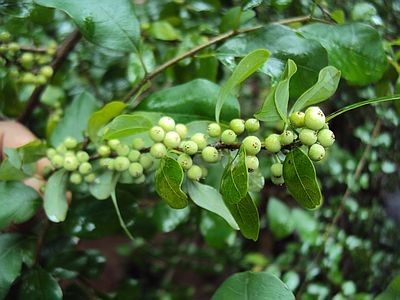
Common Name: Guggal, Guggulu, Devadhupa, Hiraabola
English Name: Indian Bdellium Tree
Botanical Name: Commiphora wightii, Balsemodendron mukul, Commiphora mukul
Family:Burseraceae
Description: The shrub reaches a maximum height of 4 to 6 feet and bears thorns on its branches. The leaves are small similar to those of neem. The flowers are red and the fruit is oval in shape and pulpy in nature. The gum resin excreted by the bark of the plant is called guggul. The plant is grown throughout the north India.
Chemical Constituents: The crude gum guggul was found to contain 2% guggulsterone and ethyl acetate extract contains 4% - 4.5% guggulsterones.E and Z guggulsterones have been reported to be 10%. It also contains Volatile oils, pinene, eugenol, furanosesquiterpenes, triterpenes, myrrhic acid.
Properties: Guggul plays an import role in reducing high cholesterol levels in the body. It has also been reported to because it lowers harmful low-density lipoproteins and elevates the beneficial high-density lipoproteins. It helps prevent blood platelet aggregation. Guggul helps in weight loss agent and improves thyroid function. Guggul stimulates the activity of white blood cells in the body, contributing to the build-up of the immune system. Guggul lipid also helps eliminate and expel dead tissues, wastes, and toxins from the body Guggul lipid may also be used to treat arthritis and reduce inflammation of the joints.
Used in the following MATXIN products: